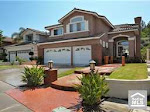Southern California's House Flipping Takes A Dip
Southern California isn't exactly flipping over real estate.
The quick-buck, buying-fixing-selling residential real estate bets were a huge part of housing in both the boom and bust periods a decade ago. Today’s market presence of these speedy resales is nowhere near the crazed heights surrounding the bubble and its subsequent bust.
But the current buzz is more sizzle than sales. Flipping became part of pop culture with the help of real estate-themed reality TV shows like “Flip or Flop,” which started in Orange County.
New data from Attom shows flips were on the upswing nationally in 2016 while declining locally.
The region’s four counties – Los Angeles, Orange, Riverside and San Bernardino – had a combined 11,148 flips in 2016, defined by Attom as homes bought and resold within a year by non-related parties. That local flipping pace was down 3 percent from 2015 and off 49 percent in five years.
Those flipping dips run contrary to slight growth nationwide in 2015 – 193,000 flips, up 3 percent in a year – and slower longer-term decline – down 18.5 percent since 2011.
“Many local flippers are being priced out of the Southern California market and are either going further inland or to other states to flip, or not flipping at all,” Attom’s Daren Blomquist says. “One flipper I talked to in Norwalk who has been doing this for 25 years said he has completely stopped buying and even compared the market to what he was seeing in 2008.”
It’s curious that Orange County, home to the popular “Flip or Flop” show, is the region’s least-likely place to flip.
In 2016, 1,588 flips notched only 5 percent of sales. Flipping in O.C. was down 5 percent in a year and off 54 percent in five years.
One good reason for limited flipping was that Orange County was the priciest place to flip in the region. The median purchase price of $465,000 vs. selling at $585,000, translated to $120,000 in typical gross profits before an expense are incurred. Flips were pricy and slow: an average 186 days, or roughly six months, up 10 days in a year – the region’s largest flip-speed slowdown.
Conversely, San Bernardino County had the region’s largest share of flips, with 1,978 quick sales equaling 7.9 percent of last year’s sales.
Why? It’s the region’s cheapest place to flip: Median purchase price was $182,750 vs. selling at $260,000, or a typical $77,250 profit.
San Bernardino flipping was down only 1 percent in a year and off 46 percent in five years. Flips took 181 days (six months) last year, flat vs. 2015 – the only local county not to see its deal speed lengthen.
Los Angeles County had 5,470 flips, deals that made up 7.6 percent of all sales and a pace down 2.3 percent in a year and off 43.5 percent since 2011. Median purchase was $362,121 vs. selling $489,000, or a $126,879 typical profit – highest in the region. Flips took 193 days last year, three more than 2015.
And Riverside County had 2,112 flips, 6.1 percent of sales and down 5 percent in a year and off 58 percent since 2011. Median purchase was $235,000 vs. selling at $310,000, or a profit of $75,000. Flips took 185 days last year, up four days in a year.
But don’t be fooled by some of these slipping trends in local flipping because quick resales are still a noteworthy slice of the Southern California housing market.
Flips were 6.8 percent of 2016 all home sales in the four local counties vs. 5.7 percent nationwide and 6.3 percent statewide.
Read more...








































































































